Bend, OR Pollen and Allergy Report for Summer 2023
Pollen Allergy Trends in Bend, OR
When is pollen lowest in Bend, OR?

February
Lowest month total PPM
Avg. PPM
When is pollen highest in Bend, OR?

May
Highest month total PPM
Avg. PPM
How does pollen in Bend, OR compare to Oregon?
Bend has a lower average PPM than the state of Oregon.
Bend yearly avg PPM:
Oregon yearly avg PPM:
How does pollen in Bend, OR compare to the USA?
Bend has a lower average PPM than the USA.
Bend yearly avg PPM:
USA yearly avg PPM:
Is pollen worse this year in Bend, OR?
Spring 2023 was worse than spring 2022.
Spring 2023 PPM:
Spring 2022 PPM:
Average PPM in Bend, OR
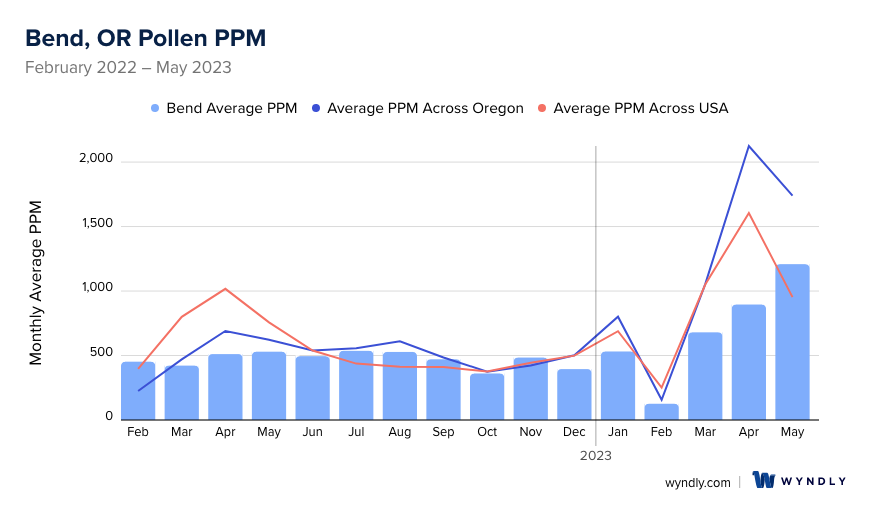
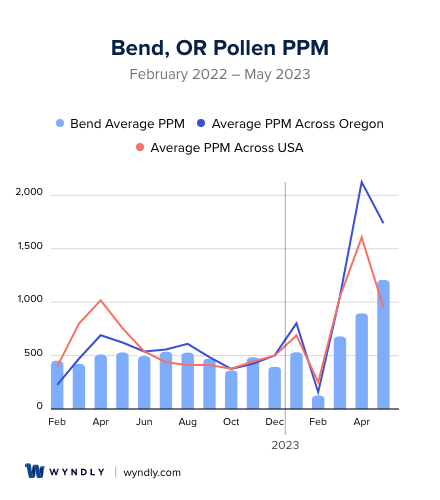
Bend, OR Pollen and Allergy Breakdown by Month
Grass
When is grass pollen highest in Bend, OR?
May has the highest grass pollen in Bend, OR with an average PPM of
When is grass pollen lowest in Bend, OR?
December has the lowest grass pollen in Bend, OR with an average PPM of
Tree
When is tree pollen highest in Bend, OR?
May has the highest tree pollen in Bend, OR with an average PPM of
When is tree pollen lowest in Bend, OR?
October has the lowest tree pollen in Bend, OR with an average PPM of
Weed
When is weed pollen highest in Bend, OR?
September has the highest weed pollen in Bend, OR with an average PPM of
When is weed pollen lowest in Bend, OR?
February has the lowest weed pollen in Bend, OR with an average PPM of
Bend, OR Pollen Monthly Breakdown by Pollen Type

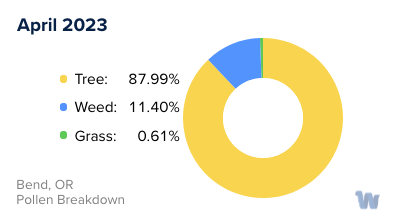

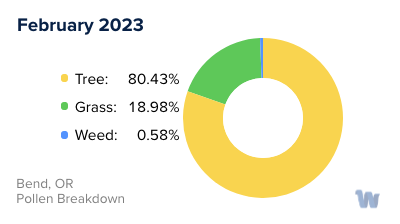
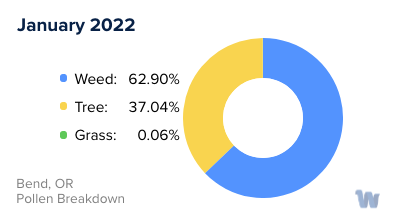

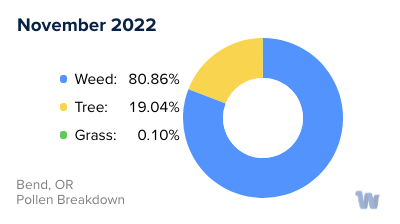


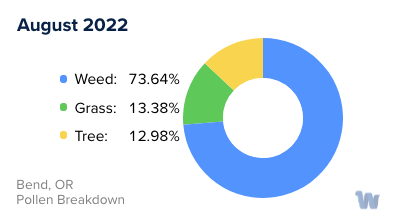
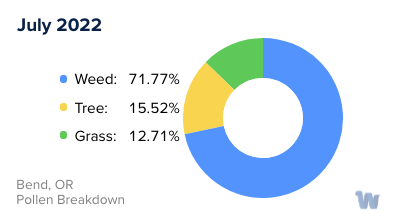

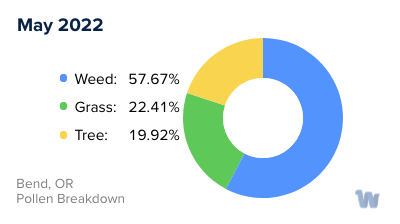
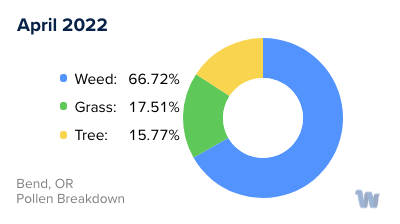


Pollen and Hay Fever in Bend, OR
In Bend, Oregon, residents can experience pollen allergies throughout the year, with the primary culprits changing as the seasons turn.
During the spring, trees such as maple, willow, and juniper are primarily responsible for the pollen in the air. As these trees begin to bloom, they release their pollen grains into the air, potentially causing sneezing, itchy eyes, and other allergy symptoms in sensitive individuals.
With the arrival of summer, grasses take over as the main source of airborne pollen. Bluegrass, ryegrass, bentgrass, timothy grass, orchard grass, and fescue grasses are the primary contributors during these warmer months. Particularly on days with a light breeze, these grasses can send a flurry of microscopic pollen grains into the air, turning beautiful summer days into a challenge for those with hay fever.
As the seasons transition into fall, weeds such as wormwood, ragweed, smotherweed, and sagebrush become the main pollen producers. Ragweed, in particular, is notorious for its ability to release vast quantities of pollen that can travel great distances on the wind.
Finally, winter brings a shift back towards tree pollen, with maple trees being a primary source. Unlike many other regions where winter provides a respite from pollen allergies, in Bend, the allergy season is a year-round affair.
In summary, the types of pollen causing hay fever in Bend, Oregon, shift as the seasons change. From trees to grasses to weeds, each season brings its unique set of challenges for those prone to pollen allergies. Despite the challenges, understanding the primary pollen producers in each season can help individuals anticipate and prepare for the changes in the allergy landscape.


